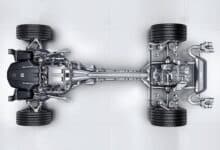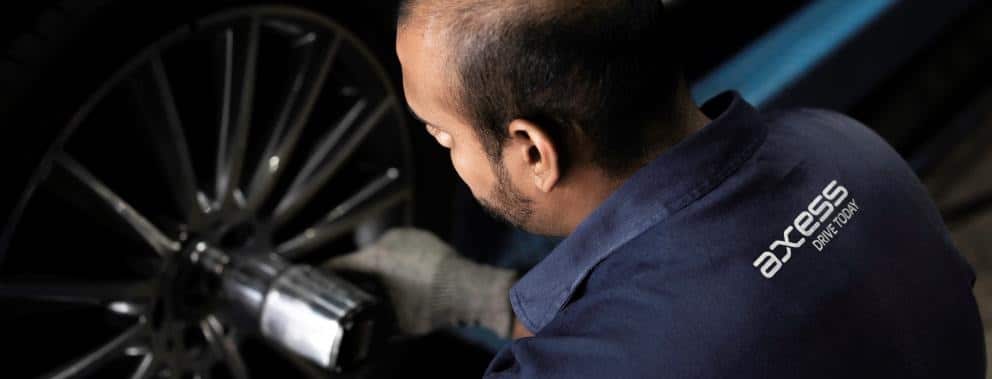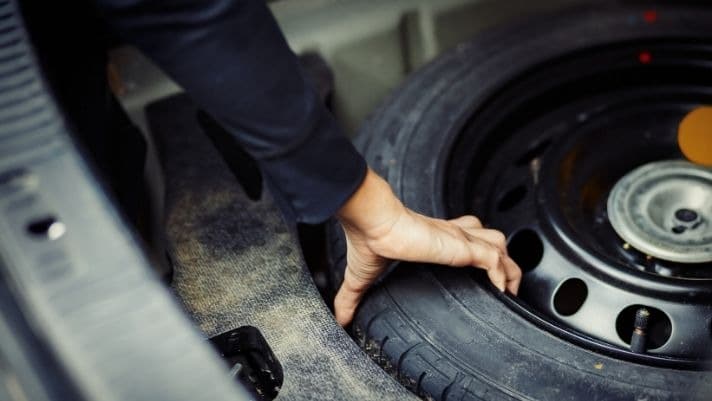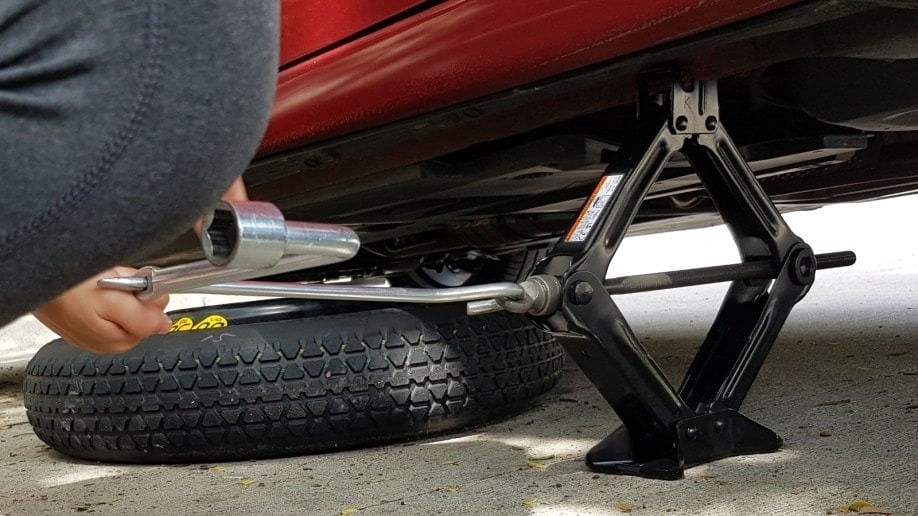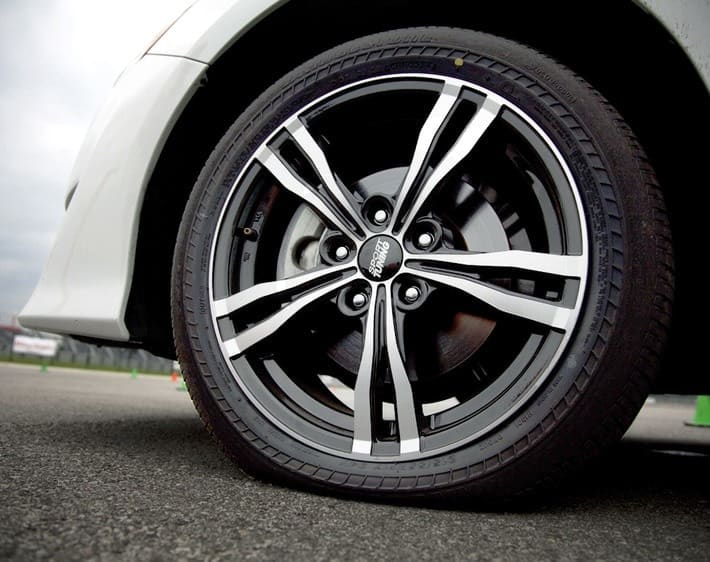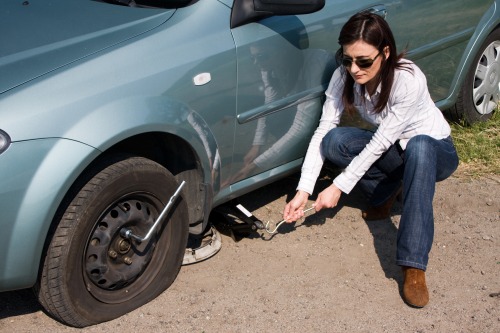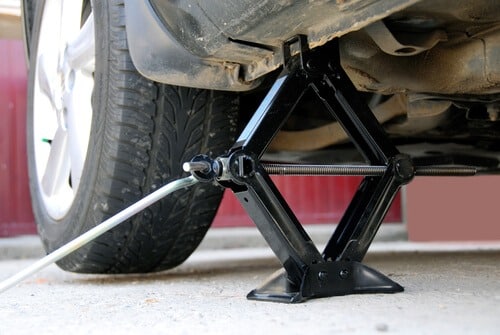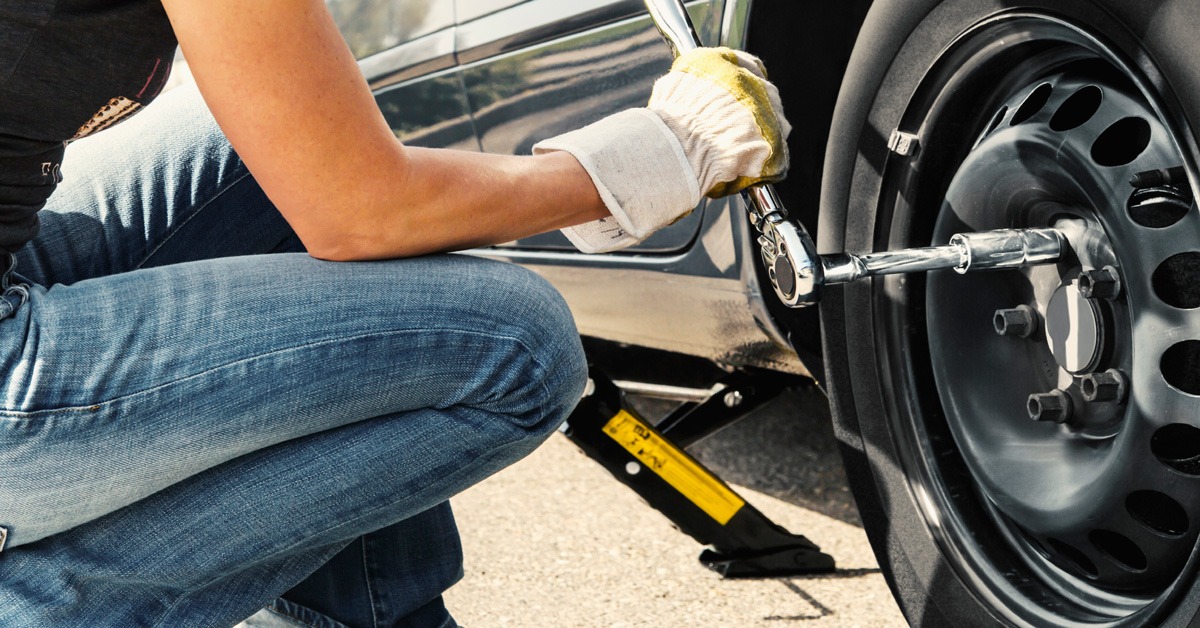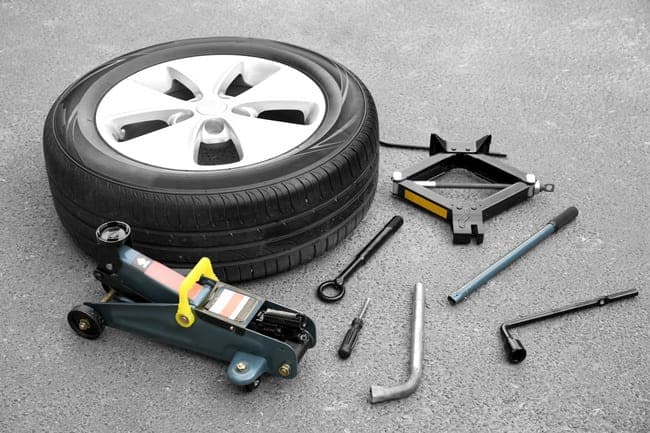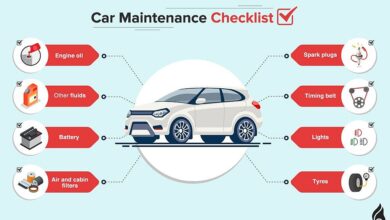How to change the spare tire and important notes to know
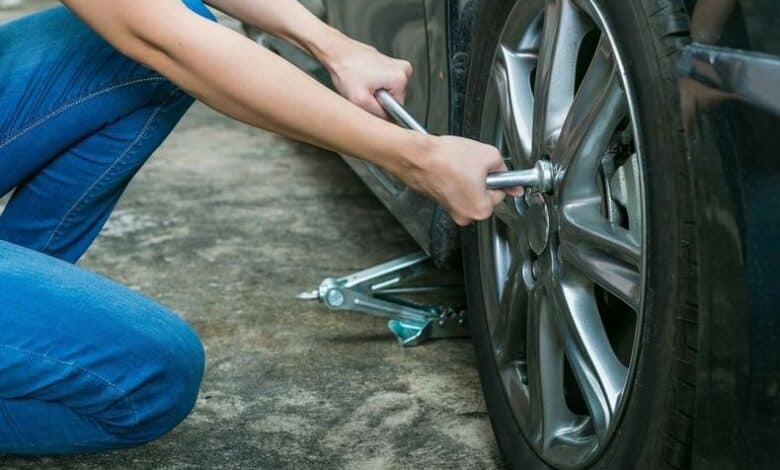
Steps to change car spare tire :
Step 1: Park in a safe place, on flat terrain
Before changing the spare tire for your car, you need to park the car in a safe place on flat terrain, avoid steep slopes or soft ground that easily sinks. If your car is near the road, try to park it as far away from traffic as possible. After parking the car in a safe location, pull the handbrake and push the gear lever to P. Be sure to turn on the emergency lights. If you must park on the side of the road, you should place traffic cones or emergency triangle signs 10 – 20 meters away to warn other vehicles.
Step 2: Insert the tire
Find rocks, bricks, wooden bars, etc. nearby to insert in front and back of the rear tire to prevent the wheel from rolling freely while changing the tire.
Step 3: Prepare tire changing gear
Tire changing equipment includes: spare tire (usually located under the trunk or under the car), tire changing kit and car chassis jack .
Step 4: Place the jack under the car
Place the jack near the location where the tire is about to be changed. The jack must lie perpendicular to the ground. The jack head must be in contact with the metal part of the vehicle frame. Absolutely do not place the jack on the plastic cover or plastic cover under the chassis. Current cars often have a groove or mark that lets the user know the exact location of the jack. This position is usually 20 cm behind the front tire and in front of the rear tire.
After placing the jack in the correct position, raise the jack so that it fits tightly against the vehicle frame. Note that at this time there is no need to raise the chassis, the wheels still need to lie close to the ground.
Step 5: Loosen the tire lug nuts
Remove the nut cover. Use a socket to turn the nut in a counterclockwise direction. To remove the nut will require quite a bit of force. If you don’t have enough strength with your hands, you can put all your body weight or hold on to the cart and use your feet to push the tube. Compared to the standard hand-held tube, the cross tube will create greater torque.
Step 6: Jack up the car’s chassis
After loosening all the nuts, jack up the car’s chassis so that the tire is about 2 cm above the ground, enough space to easily remove and install the wheel.
While jacking the chassis, make sure the jack and vehicle are stable. If you see that the jack or vehicle is shaking a lot or the jack is tilted, quickly lower the jack, check the jack’s location and then start again from the beginning.
Step 7: Remove the punctured tire
Completely remove the lug nuts from the tire. Use both hands to skillfully lift the punctured tire off the axle and place it right underneath the chassis so that if the jack fails, the chassis will not fall down.
In case the tire is rusted and difficult to remove, you can use a rubber hammer to tap on the inside or use the spare tire to tap from the outside. This will help loosen and make it easier to remove the tire.
Step 8: Install spare tire
Slowly lift the spare tire onto the axle, paying attention to aligning the lug nuts so they match. Be sure to install the tire in the correct direction, avoid installing it upside down. The tire valve tip always faces the outside.
Just install the nuts by hand at first. Then use a tube to tighten the nut. The order of tightening the nuts should follow the star-shaped diagram (crossing each other) to ensure balance. Do not tighten each nut as much as possible at once, but tighten it sequentially. Tighten each nut a little in order, then repeat the second and third tightening rounds. Note that in this step, you do not need to use force to tighten because it will easily cause the car to shake. Just fix the nut in position.
Step 9: Lower the jack and tighten the nut
Slowly lower the jack until the tire touches the ground firmly, then remove the jack. Use all your strength to tighten the nuts in the order of the star diagram. You should use your entire body weight or hold on to the car and use your feet to push on the tube and tighten the nut.
Step 12: Use the example to change the tire
Store punctured tires in the spare tire location, collect car jacks, and tire change kits.

Contents
Be careful when changing the spare tire
When replacing the spare tire, please note:
Lock the car door tightly and take out the key: If you’re alone, close all the windows when you get out of the car. Then lock the car door and keep the key in your pocket to prevent bad situations.
Pay attention to your surroundings: One rule of thumb when changing a spare tire is that even if the warning light is on or even if there is a warning triangle sign, you need to pay attention to your surroundings during the process of changing the tire. If you see a vehicle approaching, you should proactively move aside to give way. There have been many accidents that happened while changing tires.
Do not use homemade jacks: Absolutely do not lay bricks or use homemade jacks. Because the vehicle’s weight is very heavy, using anything other than a jack can put both people and the vehicle in danger when changing a tire.
See more: How does the car anti-theft alarm work? How to turn off the siren
How far can the spare tire run?
What is a spare tire? As the name suggests, a spare tire is just a spare tire used in emergency situations. Usually spare tires are not designed for frequent use.
There are also vehicles equipped with a spare tire that is the same size as the main tire, but it is quite rare. Most cars have a spare tire smaller than the main tire to save space and reduce weight. Especially with small class A cars such as Kia Morning , Hyundai i10 , VinFast Fadil … due to limited space, the spare tire is often very small. This makes the contact surface of the spare tire surface with the road surface always smaller. Leads to lower traction and longer braking distances compared to main tires.
The spare tire’s ability to corner, drive on slippery roads , drive in the rain , and prevent punctures when encountering sharp iron objects is not as good as the main tire. This means that when using the spare tire, the ABS or anti-slip system will not work as effectively as when using the main tire.
The spare tire is often not as durable and load-bearing as the main tire. The tire’s strength comes mainly from the steel and polyester underneath the rubber. With the spare tire, these components are less, even half the amount of the main tire. Therefore, using a spare tire a lot can affect the vehicle’s mechanical problems.
The differential helps transmit engine power to the wheels. At the same time, it helps the left and right wheels move at different speeds when necessary, such as when the vehicle is cornering. Because at this time, the distance of the inner wheel is shorter than the outer wheel. Therefore, the speed of the wheels needs to be adjusted differently.
When the car runs straight, the differential does not work much. However, if you use a spare tire, because the spare tire is smaller in size, it needs to rotate faster to keep up with the speed of the opposing wheel on the same axle. This will make the differential work harder. In the absence of lubrication, the gears or clutch plates may wear out more quickly.
There is no specific answer to the question of how far a spare tire can run. But according to experts as well as many experienced drivers, if the spare tire is smaller than the main tire, after replacing the spare tire, find a place to patch the main tire and reuse the main tire as soon as possible. Spare tires should not be used for long distances.
What does 4Matic mean? What’s special about this Mercedes system?
How fast can the spare tire run?
Because of its smaller size and weaker load-bearing capacity, manufacturers often recommend only driving vehicles below a speed of 80 km/h when using a spare tire. According to some experienced drivers, for safety it is best to only drive at about 40 – 50 km/h. If you drive fast, the vehicle will often shake , make noises , and have a high risk of tire puncture or tire explosion .
Which car has a spare tire?
Most car models such as Ford EcoSport , Mitsubishi Pajero Sport , Mitsubishi Xpander , Mazda 3 , Hyundai SantaFe , Kia Sorento , Toyota Innova … are equipped with spare tires by the manufacturer. However, in recent years, many luxury car models from brands such as Mercedes , Audi , BMW , Lexus … have switched to using Runflat tires. This type of tire can still be moved even if it is punctured. Therefore, manufacturers usually do not equip spare tires for vehicles using Runflat tires.
There are also some cases where the vehicle does not use Runflat tires but also does not have a spare tire. The reason is because the tire sizes are different. At this time, the manufacturer will use high-quality tires and equip customers with a quick tire repair kit.
Be careful when using spare tire
The spare tire is made from the same rubber as the main tire, so it also ages over time. Therefore, whether used or not, the spare tire needs to be replaced after 5-6 years from the date of manufacture. In case the tire is still too new, you should take it to the company for re-checking. Absolutely do not use the spare tire after 10 years from the date of manufacture.
See more at: Car care vip





